Duck Dive: UCLA Bruins Football 2025 Preview
Special thanks to Michael Hanna of The UCLA B Team for joining me on this week’s podcast to discuss UCLA’s roster:
:no_upscale()/cdn.vox-cdn.com/uploads/chorus_asset/file/26066982/UCLA_offense.png)
The conclusion I reached about UCLA’s offense for last Fall’s in-season preview was that the underlying quarterback skill and more sensibly designed playbook for him plus some of the best skill talent in the conference made it a very sharp blade, but one that would very rarely be unsheathed due to massive offensive line problems destroying any semblance of a run game and most of the efficiency passing game, as well as the quarterback’s cavalier ball security problem turning bad situations into catastrophes.
However, I had based this on only three FBS games’ worth of tape when Michael and I last talked , and because of a quirk in the schedule Oregon and UCLA shared only two common opponents for which I’d watched the Bruins during the rest of the Fall, Penn State and Washington (and those two games couldn’t have given me more polar data; UCLA had to play a backup QB against PSU and faced an elite pass rush, while UW had the most non-existent pass rush and run defense in the conference). So I didn’t have a good opportunity to revisit this theory until the offseason when I could catch up on my film study backlog and talk with Michael to see if I’d think any differently with a full season’s data.
Nope. Having done those things I’m even more convinced that was the right diagnosis the first time around. The QB finished the year with an above-average completion percentage (65%) and adjusted YPA (7.6) but a below-average NCAA passer rating at 136.3 due to a terrible 15-9 TD:INT ratio … and that was with some good luck on his INTs-per-interceptable-pass stat; with nominal rates he should have been picked off closer to a dozen times.
Every single receiving target during meaningful play — from RBs to TEs to WRs — had per-target success rates and adjusted YPT numbers that were above FBS medians (which is pretty impressive, that’s usually reserved for playoff teams and last year not even all playoff teams could say so), but UCLA’s passing game efficiency was still no better than mediocre because of how many failed null-target passing plays they had – that is, sacks, scrambles, and throwaways. The rate of such pocket breakdowns per dropback was the worst in the Big Ten at the point Oregon and UCLA were about to play, 37%, and actually increased by the end of the year to 38.1%. And of course, the run game was atrocious due to the o-line as well, causing them to continue to be one-dimensional all season long.
The one thing UCLA’s offense did well was explosive passing, but the only situation they could really pull it off in was 2nd down, and even this required some conditional manipulation. On 2nd & short they could take advantage of the “money down” principle and take low-risk shots – this was far and away their best situation, with a 75% passing success rate (one of the highest in the conference) and averaging more than 15 YPA (although one pick and one DPI). On 2nd & long they were also very successful throwing the ball at 61%, but to engineer it they had to sacrifice a costly one-third rush frequency at an abysmal rush success rate to keep defenses honest in order to set up the pass on the other two-thirds of 2nd & longs. And on 2nd & medium they flipped it all around, passing very poorly and enjoying their only successful rush situation, I suppose due to confusion.
At any rate what this demonstrates is that in situations when they could buy some pocket time, the Bruins in 2024 could pretty easily hit big passing plays with their weapons, and the only obstacle — though it was a pretty big and insurmountable obstacle all year long — was that their offensive line would so rarely give them that time. Talking with Michael this Summer, he called watching the Bruins in 2024 “a test of endurance” for all these reasons – nothing was going right with former OC Eric Bienemy’s NFL-style playcalls because they assumed adequate pockets and a run game to set them up which would never materialize, but they did pull out of the nosedive at the beginning of the season (in which they played Indiana, LSU, Oregon, and Penn State consecutively), shortened up the passing game and expressed their talent advantage over some of the less athletic secondaries in far more competitive games, finishing the last seven games 4-3 with every margin in single digits but for a meaningless UW garbage time score.
Still, all that got them was scoring over 30 points once against Rutgers, and while they hit 20 exactly a few times they only cleared it one other time, against Nebraska. Michael’s attitude was that regardless of anything else — the midseason adjustments or the deficiencies in the inherited roster which the new staff came on board too late after previous coach Chip Kelly left in February to change — that performance was inadequate for Bienemy or the rest of the offensive staff to keep their jobs. (My personal take is that there was a strong case for replacing the OL coach and a much weaker case for replacing Bienemy and the rest of the position coaches, but once head coach Foster decided to make a change at the top and the new OC wanted a different set of skill guys, the die was cast.)
Foster hired OC Sunseri from Indiana, where he was previously the QB coach under OC Shanahan. Friend of the series L.C. Norton from Crimson Quarry raved about Sunseri as a rising star in the coaching profession during our conversation this Summer. While Sunseri joined up with James Madison at the same time Shanahan became the OC there to start implementing the offense with the Dukes that they then imported to the Hoosiers last year and as such it’s probably fair to predict a similar RPO style with a good deal of his input, this’ll be Sunseri’s first time as a playcaller so I think it’s still an open question how he’ll perform and how he’ll adapt the system in Los Angeles. However, I suspect that one issue Michael and I have discussed as a problem between Bienemy and the largely Kelly-era UCLA roster — lengthy playcall nomenclature — will probably go away since I know Shanahan and Sunseri came up in the Pitt organization playing for Dave Wannstedt and Frank Cignetti Jr. who were early adopters of abbreviated collegiate playcalls.
I’m not sure any offensive line coach is enough of a miracle worker to have turned what Foster’s first hire, Juan Castillo, inherited at the position into a highly functioning group, but Michael and I agreed that he compounded the problems with a number of unforced errors in bad portal takes and unnecessary position switches without knowing out of Fall camp who his best five guys and viable backups would be. Foster has replaced him with OL coach Kwon, a fairly young coach who’s been at Arkansas State the last few years. The Red Wolves haven’t been great, though it’s hard to separate that from their head coach’s lousy track record so there’s a possibility that Kwon knows what he’s doing despite it – I haven’t had the opportunity to review their tape and Michael said all he’s been able to glean is that the line recruiting is off to a hot start. As for the position coaches, TE coach Neuheisel remains as I think he’s a lifer at this point, RB coach Steward has a long track record as a successful college coach and got let go from his last job for reasons I don’t think had anything to do with his own performance, and WR coach Toler at least knows how to recruit as evidenced by how many Cal wideouts transferred to more productive teams’ rosters.
UCLA has been operating a flophouse for quarterbacks for half a decade. They’ve had six QBs on scholarship every year since 2021, astonishing me each year with new peaks of absurdity: going into 2022 the room led the league in turnovers responsible for, in 2023 they started making up fake titles for them, in 2024 the new staff took on even more wayward wanderers and hit seven scholarship QBs, and this year when they finally managed to push four guys out the door and acquired a single “anointed” QB (to use Michael’s term) they still took on three more who look thoroughly unnecessary to keep the number at seven.
Last year’s starter, Ethan Garbers, saw his NCAA passer rating collapse from a tantalizing 153.1 as part of a three-man system in the last gasp of the previous staff in 2023 to 137.2 under the new staff, mostly for the reasons discussed above but also because, as Michael noted when we talked last September, he took it on himself to play heroball and improvise plays since otherwise the offense was going nowhere, and it resulted in a lot of interceptions. Garbers has now graduated and is off to the NFL, signing a UDFA with the Panthers (I’ve always thought Garbers has had a lot of talent and has been constrained by larger and stranger forces over his long career since signing with UW in 2020; I’ve been curious if he’d finally get to prove it with an organization that had its act together in the pros and winced when I saw where he signed).
His backup, Justyn Martin, had come on board during the 2022 cycle and Michael and I had talked about him having a ton of raw athletic talent but would need a lot of development to become the starter; he finally got his shot for one game in 2024 when Garbers took an injury against Oregon and Martin played the entire game the next week against Penn State, most of which he spent running for his life although I thought he showed more poise than most would under the circumstances. Martin has transferred to Maryland where he’ll likely be the starter in the Fall for a year before phenom Malik Washington takes over in 2026. Chase Griffin has left school, amazingly, and sophomore Dermaricus Davis has transferred to his third school in two years which is equally impressive.
Redshirt sophomore #12 QB Duncan as well as redshirt freshmen #19 QB Gordon and #10 QB Hasselbeck return (readers may recognize that final name; in a stunning move to the sports world he turned down a prestigious Maryland lacrosse scholarship to come to UCLA). They’ve recruited #17 QB Gumino, a mid 3-star, from the 2025 cycle, as well as taken 2023 low 4-star Pierce Clarkson through the transfer portal who hasn’t really played at Louisville or Ole Miss so that’s recruiting by other means.
In what was one of the more peculiar recruiting dramas of recent memory (or would be for most programs), UCLA gave up Appalachian State transfer Joey Aguilar to Tennessee, in exchange acquired Nico Iamaleava, a 2023 5-star who’d started for the Volunteers last year, and flipped Nico’s younger brother, low 4-star Madden, back from Arkansas where he’d signed as a 2025 prep after decommitting from the Bruins on signing day.
Don’t sweat it, reader, if this seemed too convoluted to follow – Michael assured me that the older Iamaleava has the job with no competition and the other six QBs are simply on the roster for the same reason UCLA has been carrying that many for all the previous years (though I’m still not certain what that is, precisely).
As Tennessee was in Oregon’s playoff bracket last season, I spent last December charting their games (I had Texas and Arizona State’s games charted too, for as much good that did). On the podcast, Michael quite correctly pointed out that Tennessee snuck into the playoffs on an extraordinarily soft SEC schedule in which they ran up the score on fully half their opponents who were powerfully overmatched (Michael’s tone was enthusiastic rather than disdainful on this point; I think he’s looking forward to the possibility of some easy wins for the first time in a long time). This explains one of the larger disparities I’ve encountered when controlling for garbage time compared to raw stats – Tennessee’s passing offense was underwater in all three metrics I track from charting during meaningful play, with a 47.3% success rate given the down & distance, 6.77 adjusted YPA, and 13.5% explosiveness rate, and Iamaleava’s NCAA passer rating collapsed by 20 points from 145.3 in raw stats (a couple points above FBS median) to 125.3 using advanced data controls, largest such effect I’ve ever seen. UCLA’s passing offense in 2024, using the same data controls, significantly outperformed Tennessee’s on these core metrics.
It would exceed the scope of this article to describe my many, many complaints with the structural flaws in Tennessee’s offense (I suppose the rough draft of that article will remain in data storage indefinitely), but Michael summed it up nicely enough in saying that Iamaleava has the physical tools to be a very effective QB but has plenty of kinks to iron out as well. There are sufficient confounding variables with Tennessee’s inefficiencies last year that it’d be a mistake to go any farther in projecting Iamaleava’s season than that he can do a lot of damage with some good pieces around him and a playcaller who isn’t out to lunch, but that he’s no superhero who can overcome any obstacle and rescue any play. As Michael and I discussed on the podcast, the most intriguing parallel between UCLA and Tennessee’s 2024 seasons is how often the deep ball was missing, although for different reasons, and I’m interested to see if Iamaleava will be freed up to hit those more (as would have been rational last year for him but wasn’t possible for Garbers because of the line), or if Sunseri keeps it to the short RPO game for fear of line collapses and Iamaleava is back where he started.
The run game was practically non-existent for UCLA in 2024, by far the biggest change for the Bruins compared to previous seasons. They were the least effective team in the conference on a per-carry basis in each of the metrics I track from charting, didn’t trust the run game even in short yardage, were miserably ineffective when they did rush on 1st down so any series that started that way almost inevitably turned into a wasted possession, and ultimately became one-dimensional as they passed the ball in any given situation on more than a 2:1 basis.
Each of the running backs individually came in at equally terrible adjusted YPC figures between 3.2 and 3.8, and the team had so few 10+ yard runs on an absolute basis that the backs’ individual explosiveness cannot be properly computed on a rate basis. Their success rates and meaningful carries per game can be tracked and compared to their prior performances, however, and these changed over the course of the season.
Going back to 2021, TJ Harden and Keegan Jones have had other primary backs brought in to get more carries over them — Britain Brown, Zach Charbonnet, Carson Steele — but between the two of them as backups, Jones was always demonstrably the better back to Harden with a 58% success rate vs 53% and 6.3 adjusted YPC vs 5.5 in the 2021 through 2023 seasons, and yet Harden was consistently given three times as many carries. That trend continued with the new staff in 2024 — Michael told me that there was a sentimental connection between Foster and Harden that may have overriden analytical judgment — however, about midway through the season Jones’ numbers tanked even worse than Harden’s did, and they finished out with Harden at 38% and Jones at 28.5%, the first time in their careers at UCLA in which Harden beat out Jones on a per-carry basis.
At the same time this flip was happening, the staff started giving more carries to the two transfers they’d brought in, #0 RB Berger from Wisconsin (a 2020 mid 4-star who originally signed with MSU) and #22 RB Frias from Kansas State. Frias finished with about 15 meaningful carries while Berger got about three times that many, so Berger wound up with about the same number by the end of the season that Jones did. Berger and Frias’ success rates were substantially higher than Harden and Jones’, although still underwater at about 45% each. Given that Harden and Jones have been effective in previous iterations of the team, I think their falloff is mostly about how poor the new o-line performed, and that Berger and Frias overperformed them speaks well to their ability to be their own blockers.
Harden has transferred out and Jones has graduated, while Berger and Frias return. A couple of other backs who’d gotten some carries in the past but not in 2024 have also left, Anthony Adkins graduated and Deshun Murrell transferred out. Two freshmen transferred out without playing, Isaiah Carlson and Cameron Jones.
There are three additions to the running back room: low 4-star prep recruit #33 RB Cox whom Michael seemed pretty excited about, Cal transfer Jaivian Thomas who was very effective last year for the Bears but wasn’t available for Spring ball, and #6 RB A. Woods (son of former Oregon cornerback Rodney Woods) who was a phenomenal back for Idaho when I watched the Vandals’ 2023 tape then transferred to Utah last year but the Utes didn’t use him at all for reasons I don’t understand. There’s quite a variety of potential to this room, not very much of which we’ve had an opportunity to see in a Bruins uniform and none with Sunseri’s new staff, so picking out which backs will get the carries is pretty tough. But Michael and I had the same take: there has to be at least one who’s a top quality back out of this group and odds are very good there are at least two, with depth options in case of trouble. Even sight (mostly) unseen, if there’s a problem in the run game again in 2025, it’s highly unlikely to be the backs themselves.
Moliki Matavao was drafted in the 7th round by the Saints; he was the Bruins’ primary tight end for the last couple of years since transferring from Oregon and the only receiving option on the team to average over 10 adjusted YPT in the last two seasons combined.
There were four other tight ends in the unit last year. Two were from the big group of walk-ons Kelly had taken in his first couple years at UCLA and had seen some run in the past but didn’t really get used last year, Michael Churich who’s graduated and #81 TE Habermehl who returns in 2025 for what I think will be his seventh year. Bryce Pierre had transferred in from Arizona State and had a somewhat specialized role at UCLA catching short passes and bowling over tacklers for conversions since he was was pushing 260 lbs and so thickly built, which kept his efficiency rate high but his YPT low; Pierre signed a UDFA with the Panthers. Finally, #28 TE Pedersen, a low 4-star from the 2022 class, got what worked out to be one target per game (though skewed to the later part of the year, I barely saw him during September), and his per-target numbers were intriguing at 77% success and 9.5 YPT.
Since the only additions to the room are two prep recruits who are too undersized to play right away and the late portal acquisition Jake Renda — who’s recorded practically no stats since enrolling at Pitt in 2021 and Michael confirmed must have been brought on just to be a backup — Pedersen is the one and only viable tight end receiving option for the Bruins. I asked Michael if he thought Pedersen’s per-target figures were for real and would scale up from the small sample size; he seemed skeptical but allowed that Pedersen was brought on with some recruiting buzz and to develop into just this role so it’s a possibility. Indiana last year didn’t make extensive use of their tight end, but Sunseri may wish to given that UCLA’s wide receiver room is built pretty differently, and it looks like he’s only got one set of hands to work with.
UCLA has had excellent wide receiver talent for the last several years, but for much of that time quarterbacks have had limited access to them because of injuries, eligibility issues, or quick pocket collapses. 2024 was no exception to that, and it’s looking like 2025 won’t be either. Last year they used five wideouts over the course of the season: #1 WR Flores, #3 WR Gilmer, #2 WR Mokiao-Atimalala, Logan Loya, and J.Michael Sturdivant.
Flores was a sophomore transfer who’d played as a true freshman at Notre Dame and clearly an electric athlete on film, he led the unit with a 9.67 adjusted YPT in the four games he played before getting hurt and missing the rest of the season. Gilmer was a true freshman in 2024 and played on the outside at 6’2”, putting up impressive efficiency numbers a 61.5% given his age and the context of the offense. Mokiao-Atimalala played out of the Y, very good vertical and hands the last time I saw him in 2022, then he missed 2023 with some kind of non-injury issue, played in nine games in 2024 with a few games midseason missed due to injury, yet despite all that rust put up even more consistent numbers at 62.5% and 7.9 YPT. Loya, as he has been since I first started watching his tape in the covid season, was incredibly productive out of the slot at 70.5% and 9.2 YPT. Sturdivant was, predictably, not able to be utilized properly by this offense since he’s a sideline flanker and they never had the pockets for it, so he posted a respectable 8.1 YPT on the balls he would catch but relative to the rest of the group had a mediocre success rate at 56%.
Loya and Sturdivant have transferred out, as has Braden Pegan, a 2022 recruit who hadn’t played. Flores, Gilmer, and Mokiao-Atimalala return, though Michael told me that Flores still wasn’t able to practice and it’s a huge X-factor whether and when he’ll be able to rejoin the team. They also return #14 WR Shaw (son of former Stanford coach and WR himself, David Shaw) who walked on to the team but was a low 3-star in the 24/7 composite and got a couple of targets during last season, plus redshirt sophomore #85 WR Gray and redshirt senior #21 WR Staples whom I’ve never seen play.
UCLA recruited a couple of mid 3-star preps who arrive in the Fall and are likely to redshirt. The most certain of the transfers to play is #7 WR Matthews who started out as the slot man in his true freshman season at Utah in 2023 then played last year for Cal; he’s the only guy under 6’1” in the room and an RPO offense will likely need a quick change-of-direction player. Last Fall, #11 WR J. Wilson, who’d been a backup at Arkansas since 2021, hit the portal in the middle of the season and committed to UCLA early, so he didn’t record much in the way of 2024 stats and the Bruins have had him in the fold for a long time. Wilson’s production doesn’t jump off the page but he may prove to be pretty valuable if the Bruins are getting unhappy answers to several outstanding questions this offseason about availability. The third portal take is Kaedin Robinson who was highly productive at Appalachian State after starting his career as a Juco, he’s currently suing the NCAA for another year of eligibility to play at UCLA and it’s unknown whether he’ll get it or not.
While the depth for the gloomiest scenario here — in which Flores and Robinson are out, and the freshmen as well as Gray and Staples aren’t playable — would be very tight at just four main guys plus a fifth in Shaw, I’d still like that room better than most Big Ten wide receiver units. If they get happy news about either or both, then I’d take UCLA’s receiver room over almost any other in the conference … if only the QB would have a moment to throw to them.
Left guard Spencer Holstege was the only offensive lineman to play every game in his position during the 2024 season. Right tackle got off the next lightest … #72 RT DiGiorgio played most games and only had utility lineman Niki Prongos fill in for a couple. At center, Josh Carlin started the year, but after four games he got sucked into the right guard debacle so #64 C Yoon came off the bench (for the first time I’d seen him in three years; I’d written him off since he was listed at only 280 lbs but he was at least playable if not great).
The debacle in question was starting out with the ill-advised UNLV transfer Alani Makihele, who was then benched after two games for the freshman he was rotating with, Tavake Tuikolovatu, who also couldn’t hack it so Prongos took over, then when Prongos was needed to solve another catastrophe they moved Carlin over. That catastrophe was what was happening at left tackle: they’d started Houston transfer #71 LT Unije instead of Oregon transfer #77 LT Jeffers (Michael told me that the staff preferred Unije and brought him in specifically to start; I watched Jeffers in 2023 and the Spring game and think the staff erred), but then both were lost early in the season to season-ending injuries, so Prongos had to play most of the rest of the season there, until Prongos got hurt so a walk-on senior whom I didn’t even know was on the team, #67 LT Mahe, filled in for the last two weeks.
The reader should be commended for keeping up with the math here – that’s 10 unique human beings over the course of the season starting for the Bruins offensive line, with two at C and RT and four (!) apiece at LT and RG. The results were cumulative offensive line grades in a very close battle for the lowest in the conference with Maryland, Northwestern, and Purdue, and rock bottom in adjusted line yards for the rushing game and pocket collapses per dropback in the passing game. The fact that UCLA finished with overall offensive stats that were lukewarm in several metrics instead of absolute zero is a testament to the quality of the skill talent.
Prongos has transferred to Stanford, Makihele has returned to UNLV, and Kansas picked up Tuikolovatu from the portal, while Carlin and Holstege who were covid super-seniors from the 2019 cycle have graduated. They’ve also lost a couple other linemen I mentioned in last Summer’s preview who didn’t play – the freshman Marquise Thorpe-Taylor hit the portal, and the Notre Dame transfer Michael Carmody and the defensive line convert Dovid Magna graduated without seeing the field. Five other linemen are also no longer listed on the roster who I believe were non-scholarship.
The right tackle DiGiorgio, the second guy in at center Yoon, and the three left tackles Unije, Jeffers, and Mahe return. DiGiorgio and Yoon are likely to get their starting jobs back in 2025, though reading the tea leaves from the portal takes and what Michael told me, the new staff doesn’t think any of the other returning tackles are more than backups. The only other returner who looks to get significant play in 2025 is redshirt senior #69 OL Akinshilo, who’d transferred in from Iowa State last cycle after being an unrated Juco and hasn’t played at the FBS level yet, but Michael said will probably be in the rotation if not fulltime starting at left guard.
They’ve taken four transfers this cycle: #74 OL Armella from Florida State, #63 OL Arnold from Jacksonville State, #55 OL Brooks from Oklahoma, and #77 OL C. Ford from Kentucky and USC before that. I charted Ford as the Trojans’ starting left tackle in 2021 and 2022 and he graded out pretty well for a young player with lousy coaches, but he hasn’t been able to play much with the Wildcats due to a hand injury that’s required surgery. Michael said Ford was with the ones during Spring practices at LT which makes sense to me. Arnold I think is a depth piece at tackle, he was Jax St’s starter at RT last year for the first three games then apparently demoted to backup. Brooks was a mid 4-star recruit last cycle who redshirted, I was curious if he might break into the rotation because UCLA could use anybody that talented and Michael replied that he was rotating with Akinshilo at LG, so evidently that’s the case.
Michael’s response about Armella astonished me, though – he’s a 2022 mid 4-star who was listed as playing every game in 2024, but I had watched all of FSU’s offense last year and never saw him from scrimmage, so I went back and watched the special teams tape and saw he was a kicking game blocking specialist only. I’d also noticed that UCLA has had a mass exodus of all their specialists — kickers, punters, long snappers, etc., as well as all those OL walk-ons — and figured they took Armella to replicate that role. But Michael floored me by saying that instead Armella is in the running for starting at RG in 2025. I couldn’t believe starting a guy who couldn’t break into a 2-10 team’s lineup in three years is worth bringing the number of transfer portal starters to three and dooming the line. It would be far better to go with Akinshilo and Brooks as starters and keep it to two (better yet, give Jeffers or Unije another shot at LT and get the portal count down to just one).
The other salient issue is that UCLA isn’t bringing in enough bodies from the prep ranks to dig themselves out of the recruitment hole that Kelly left them in. Arnold and Brooks included, there are only six o-linemen from the 2023 cycle or later in the room, and as Michael and I discussed, virtually everyone else will be leaving after 2025. Even if they get everyone they’re after for the 2026 recruiting class and nobody transfers out (good luck with that) they’ll still be short-handed going into next year and will be dependent on taking transfers again, a situation that will likely repeat for the next couple of cycles because by definition transfers skew older than prep recruits. The immediate impact of this phenomenon is that, if the staff has access to calendars and anticipates this issue, they’ll want to play some of the younger guys in 2025 whom Michael dismissed on the podcast as not yet physically ready to play. I think he was probably correct about that assessment in a vacuum but it’s something that could happen anyway because they need to get ready for what would be an even worse 2026 if they don’t.
:no_upscale()/cdn.vox-cdn.com/uploads/chorus_asset/file/26066980/UCLA_defense.png)
The central issue with last year’s defense was the extreme imbalance between how few defensive linemen they had and the glut of off-ball linebackers Kelly recruited (this was actually an issue in 2023 as well, but they had three future NFL edge rushers as transfers who covered up for a lot and I think might have made then-DC D’Anton Lynn look more competent than was necessarily the case). DC Malloe last year then had to deal with almost every one of the few interior defensive linemen getting hurt at one point or another, meaning he simply couldn’t field his even-surface defense and went to an odd-surface with a converted ILB to an OLB and a swarm of backers bluffing and dropping out at the snap, and on a substantial chunk of reps it was technically a 1-5-5.
I think it was a successful innovation – setting aside the one-off year in 2023, UCLA’s defensive performance in 2024 outperformed their historical trend for the entire Kelly era with a roster that was effectively made up entirely of Kelly’s players, and in my opinion a number of backers got more draft attention than they would have without that innovation. Malloe seems to have been rewarded, since he’s basically the only on-field defensive coach whom Foster retained. DL/OLB coach Franklin, ILB coach White, and DB coach Lynn are all old hands from Power conference and NFL coaching ranks and Michael said are from Foster’s personal rolodex, and CB coach Martin is back for his second stint with UCLA (someday I’ll get Michael to tell me his beef with Martin; I’ve studied him at UW, UCLA, Arizona, Colorado, Oregon, and MSU, as well as where the corners he’s developed have gone on to after they’ve transferred, and his players’ grades-over-baseline and NFL placement rate are the highest of any CB coach I’ve observed).
It’s a dicey proposition whether the defensive tackles will be in better shape in 2025. They’ve lost Jay Toia who was their best lineman and absolutely central to the defense, drafted in the 7th round by the Cowboys, as well as redshirt senior Sitiveni Havili-Kaufusi who transferred out after finally coming online and playing fairly well last year.
The biggest pleasant surprise (to me) was how much play they got out of #92 DT Taupaki since I’d seen UCLA had converted him from an offensive lineman last year and all empirical evidence indicates that this never works out for immediate converts from one side of the line to the other. But Michael clued me in this Summer that Taupaki was actually a nose tackle in high school who was recruited under a different name, persuaded the previous staff to let him switch to offense, and the new staff flipped him back to defense which he already knew how to do. They also return #55 DT Fuimaono, who was a redshirt freshman last year and rushed into action ahead of schedule because of all the injuries; he did okay under the circumstances and should be ready for a bigger role in 2025.
The big question mark about whether they’ll have the depth to run Malloe’s intended defense comprise the remaining four guys in the room. Those are former Oregon transfer #99 DT K. Williams who’s a good fit for Malloe’s system but got hurt early and missed most of last year and 2025 Spring practices, super-senior #58 DT G. Smith whom I’ve never seen play a full season of football and missed all of last year with an injury, redshirt sophomore Oklahoma transfer #54 DT Sanders who’s only gotten his feet wet so far in his career, and mid 3-star prep recruit Robert James who doesn’t arrive until Fall and is listed at 285 lbs and so I have to think is very unlikely to play right away.
I think it’s unrealistic to expect happy news on every question here and for all six guys in the defensive tackle room to be playable. Middle-of-the-road projection is three good tackles and a fourth who’s passable but there’s some kind of problem (example scenario: Taupaki and Williams are starters, Sanders doesn’t work out but Fuimaono does, James has to redshirt, Smith is viable as a rotational guy but isn’t available for half the year so they can only rotate through three guys in Taupaki, Williams, and Fuimaono). Given the injury history and where they were starting out from in terms of experienced bodies, once Havili-Kaufusi transferred out they needed to get a replacement out of the portal to bring the numbers up and even out the odds that they’d still have a full rotation (frankly, they should have done that even without his transfer). Failing to do so has left them short-handed and relying on hope for really good luck, which would be the first time that’s visited the Bruins defensive line room I can remember.
One of the solutions to the defensive tackle problem last year was to periodically move a defensive end inside; at no point were they able to get away with this as opposing offenses would identify the undersized lineman, combo him and create a big hole to run through up the middle. The upshot was six different ends rotating through but with most not really distinguishing themselves. The one who graded out the best on my tally sheet — for the first time since he’d transferred in from Notre Dame — was senior #44 DE Aupiu, who returns in 2025 and probably has a starting spot. Also returning is redshirt sophomore #88 DE Buckey, who I would see in the rotation early in the year but never accomplishing anything, and then disappeared to the special teams unit.
Everyone else from a pretty big room has left. Luke Schuermann and Cherif Seye graduated, while Jacob Busic and Drew Tuazama transferred out. The 2023 mid 4-star Collins Acheampong has also left without yet playing a college football snap; I haven’t been able to find out what the story was with his enrollment at Miami or UCLA but he’s now listed on Bowling Green’s roster.
They’ve taken six additions into the room. Three are preps, a couple of mid 3-stars Michael said are likely to redshirt but high 3-star #24 DE Cogshell enrolled early and was making some noise in Spring practice … parsing the numbers, we agreed the staff will probably try and get Cogshell into the regular rotation early. The three transfers are Anthony Jones (onto his fourth Big Ten school in as many years, Oregon to Indiana to MSU to UCLA; not to be confused with the 2026 prep of the same name and position) who graded out very well last year on my tally sheet, #11 DE Davillier who’s been a rotational player at Arkansas, and Kechaun Bennett who was a late Spring grad transfer from Michigan.
Aupiu and Jones are starting-level players. I don’t think Bennett or Buckey are, they’re pretty late in their careers without serious playing time for an analyst to count them as more than depth pieces. Davillier’s experience doesn’t leap off the page as starting-caliber, but as we discussed on the podcast, the numbers don’t add up without him and so Michael’s right, he’s almost certainly going to be high in the rotation, and Cogshell the true freshman will round things out. Although we’ll have to wait and see how they actually perform, in terms of body count I think that’s a viable unit – they’ll have a full four-man rotation with two older depth guys to deploy without having to reach for the other two true freshman. My top concern would be if the staff pulls the same stunt as they did last year and borrows against this unit’s depth to address the paucity at tackle, which is just going to harm both.
The linebacker room was the sackful of hammers Malloe had, and so turned every problem into a nail. I counted nine different backers getting serious play in at least four games, and there were still five more scholarship backers who didn’t see the field.
On last September’s and then this Summer’s podcasts, we traced the complete evolution of how Malloe invented a somewhat new defense on the fly using this very large linebacker unit. Since it’s been pared down substantially in 2025 and it looks like he’s going to return to using them for just the two main off-ball backers and an additional specialist role who’s also at depth, rehashing that history seems unnecessary for this preview – if any moonlighting happens this Fall, it’s far more likely that the extra bodies in the secondary are added to this unit rather than any of these guys moving on-ball.
Femi Oladejo, who was converted to an on-ball backer midseason, was drafted in the 2nd round by the Titans. Carson Schwesinger, who did not appear to be in line for a very big role at the beginning of the year, became the only dedicated off-ball backer while everyone else was a bluffer of some sort and so wracked up an amazing tackle count and was drafted in the 2nd by the Browns. Kain Medrano was one of the most effective of those bluffers (and of them, the one who stayed healthy) and was drafted in the 6th by the Commanders. Ale Kaho, as was sadly a pattern, stayed healthy only long enough to play eight games, and has run out of eligibility. Joseph Vaughn played as a backup and graduated. The freshman Isaiah Patterson and the senior Joquarri Price have transferred out without playing. A high 3-star redshirt freshman named Larry Edwards no longer appears on the roster but I can find no record of a transfer or any media reports about him leaving the team (as I mentioned on the podcast, his very common name makes confirming any news very difficult).
That’s eight backers out of the room. There are five returners, and after talking with Michael, I think only one is a real starter and only one other is likely to get much run as a specialist, which is why I think this room has been seriously cut down to just the size it needs to be for Malloe’s regular defense — the 4-2-5 / 2-4-5 from his UW days — and a recurrence of the 2024 improvised system is very unlikely.
The likely starter is super-senior #6 LB Vaughns (he wore jersey #21 last year; not to be confused with the backup who graduated). Vaughns is a high-motor, two-sport athlete who was very effective when he read the play correctly but could be badly off if he misread it; unfortunately the dataset on him stepping into a big role last year was cut short by an injury early on against Oregon. Michael said he was healthy again and with the ones this Spring and he looks like the best athlete by far of this room to me. The returner who got the most play last year was backup #9 LB J. Woods (jersey #17 in 2024), Michael said he’d be the specialist who’d rotate in when they’d go to a 4-3 for heavy looks, with another returner #33 LB T. Lee as the backup in that spot. The final two returners haven’t gotten any play since enrolling in 2023, #40 LB Malafu and #0 LB Pellot, and I think are just depth pieces.
The two transfers into the linebacker room are #9 LB Chisom from Oregon State and #10 LB Perry from Louisville. I’ve charted both before — from the Ducks’ games against the Beavs and because the Cardinals have played Big Ten teams in their last two bowls — and it doesn’t surprise me that Michael had Chisom taking over as the other starting backer, since he was clearly being groomed for it as a backup at OSU, or Perry being converted from a nickel safety to a backer because he had lost his starting job from 2023 due to being terrible in coverage but was pretty good at tackling. Perry looks to be another specialist in the STAR position, I think probably best understood as a box safety in Malloe’s system for the down & distance situations that require it.
For standard downs, the nickel is more like an inside corner position. Last year it was primarily played by KJ Wallace, who’s since graduated. His backup in the first three games was DJ Justice, but he got hurt and missed the rest of the season, and has now transferred out. Wallace didn’t come off the field much after Justice’s injury; when he did I saw a smattering of backups and wasn’t sure how the order was meant to go … former walk-on #1 CB K. Clark got some play but only in two games and I’m not sure why though Michael said the staff likes him, and #22 DB Stewart replaced him at other times but was rotating at the deep safety spots as well. #21 CB C. Martin (son of the position coach), who’s played the position at Oregon and last year at Arizona State, has transferred in and will almost certainly have the starting job, and I’d guess that Clark or Stewart would be Martin’s backup. Michael suggested Perry could do it because he has some experience there but I would stress that the film does not indicate this would be wise.
The deep safety spots were played by Bryan Addison from Oregon and Ramon Henderson from Notre Dame last year. It looks like they’ll go with a couple of transfers again, #2 DB Threats from UCF and Cincinnati before that at the free safety position and #4 DB Lawrence from Oklahoma and Tennessee before that at strong safety. Both most recently played in 2023 — Threats because he was hurt in 2024 and Lawrence because he’d transferred to Ole Miss but it wasn’t a good fit according to Michael so he hit the portal very early and has been committed to UCLA for a long time — but their production was excellent then and they’re both redshirt seniors with a lot of talent so I shouldn’t expect a problem. They’ve also picked up mid 4-star redshirt sophomore #3 DB Stafford from Miami who played backup last year and have Stewart for the rotation as well, plus a couple of low 4-star true freshmen who enrolled early, so depth shouldn’t be an issue.
The outside cornerback unit is going through a total overhaul, and although they weren’t exactly the biggest problem (midfield pass defense against the nickel and backers is where most of the damage was done, though the corners weren’t blameless) I think it’d be reasonable to expect a moderate step up. All three of the guys who rotated through at both outside spots have departed, Kaylin Moore and Devin Kirkwood have graduated while Jaylin Davies transferred out. A freshman who redshirted, Khristian Dunbar-Hawkins, also transferred out. The two scholarship returners, #18 CB Marshall and #12 CB Benjamin, didn’t really get any meaningful play last year, Marshall because he was a converted wideout who just came in for a bit of garbage time and Benjamin because he was a redshirting freshman, but Michael said the staff is high on both of them and to expect to see them in the rotation in 2025.
They’ve taken five transfers who I believe are cornerbacks. The one I’m most confident will get a starting job is Jamier Johnson, who began his career at Texas then transferred to Indiana in 2024 and was a starter there, and on my tally sheet was the more effective of the two (not the fan favorite because he was rarely seen on TV making big plays, but of course, this is what the smart football fan wants in a corner), however Johnson wasn’t available in Spring practices so we’re not sure where he stands yet. The other highly experienced corner transfer is #2 CB A. Jordan from Oregon State, who I’ve watched a lot. He doesn’t grade out as well as Johnson on my tally sheet but he’s not bad and he’s much more of a body type fit for Martin’s typical starter.
The two Fall-arriving mid 3-star prep recruits are also body-type fits; I think they’ll redshirt since they come in late but I tweaked Michael a bit on the podcast that they’re probably better than the scouting services think since Martin likes them. The remaining three transfers are intriguing: #28 CB Jackson who played in six games at the FCS level last year and #7 CB A. Williams who played four at Louisville are hard to figure out since they have very little production and I think are coming off of injuries, but seeing them pictured made it click because they’re also fits for Martin’s preferred body type, while Rodrick Pleasant also didn’t play much but is a lot shorter, though Martin recruited him at Oregon and he’s one of the fastest men alive.
My read is that Johnson and Jordan were brought on to start with Benjamin and Marshall as backups, and the three other transfers (who are each from the 2023 cycle) plus the preps are developmental guys because Martin likes their toolkits but are unlikely to get meaningful play in 2025. There’s enough depth here that they could easily loan out to the nickel room, which in turn would open up options for more midfield coverage and linebacker flexibility – that’s something they were lacking in 2024 since nickel rotation was practically non-existent and the backers were all clustered and buzzing at the line of scrimmage to emulate a defensive line, and why the midfield often had holes in pass coverage.
Share this content:
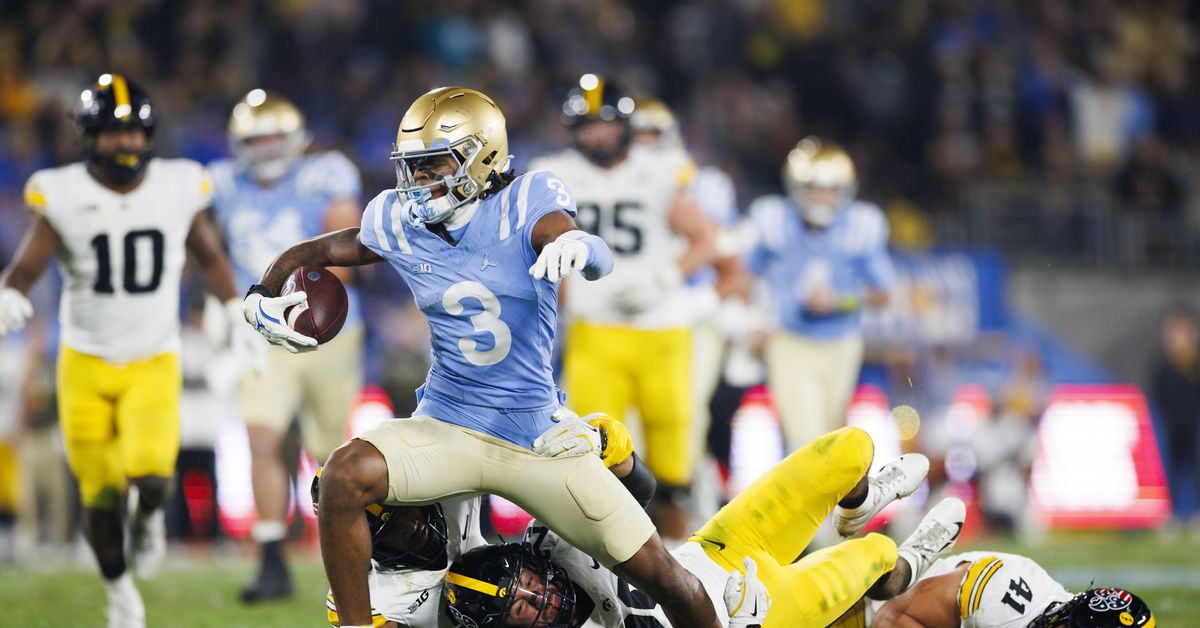

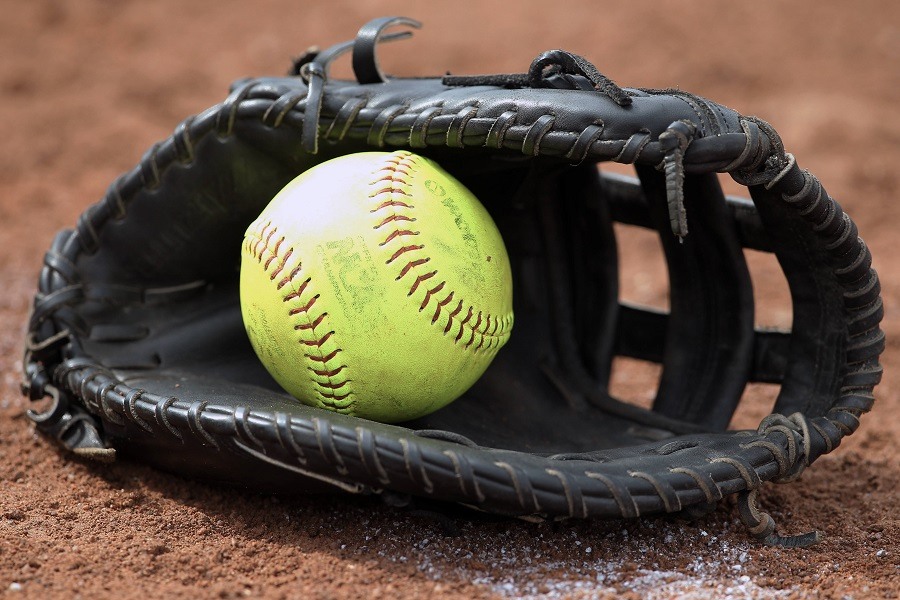
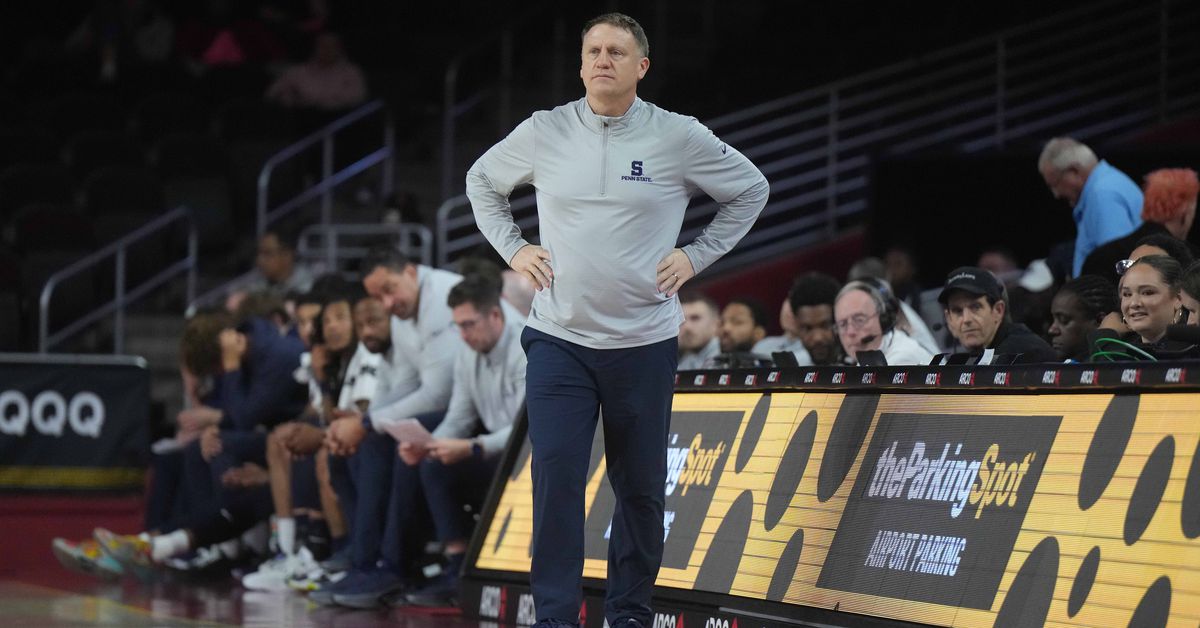
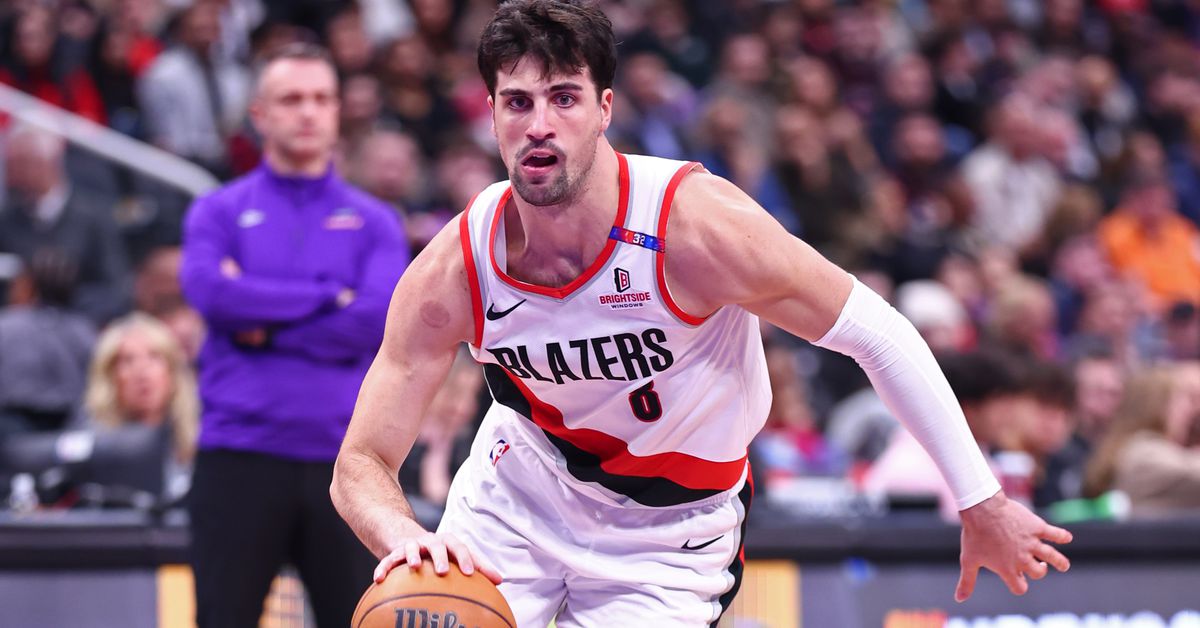



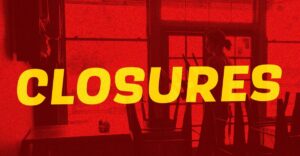
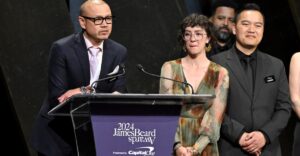

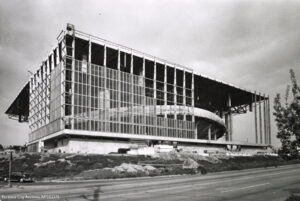
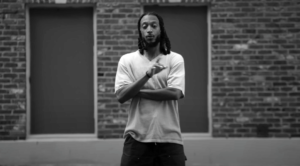

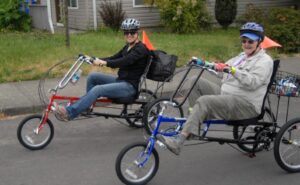
Post Comment